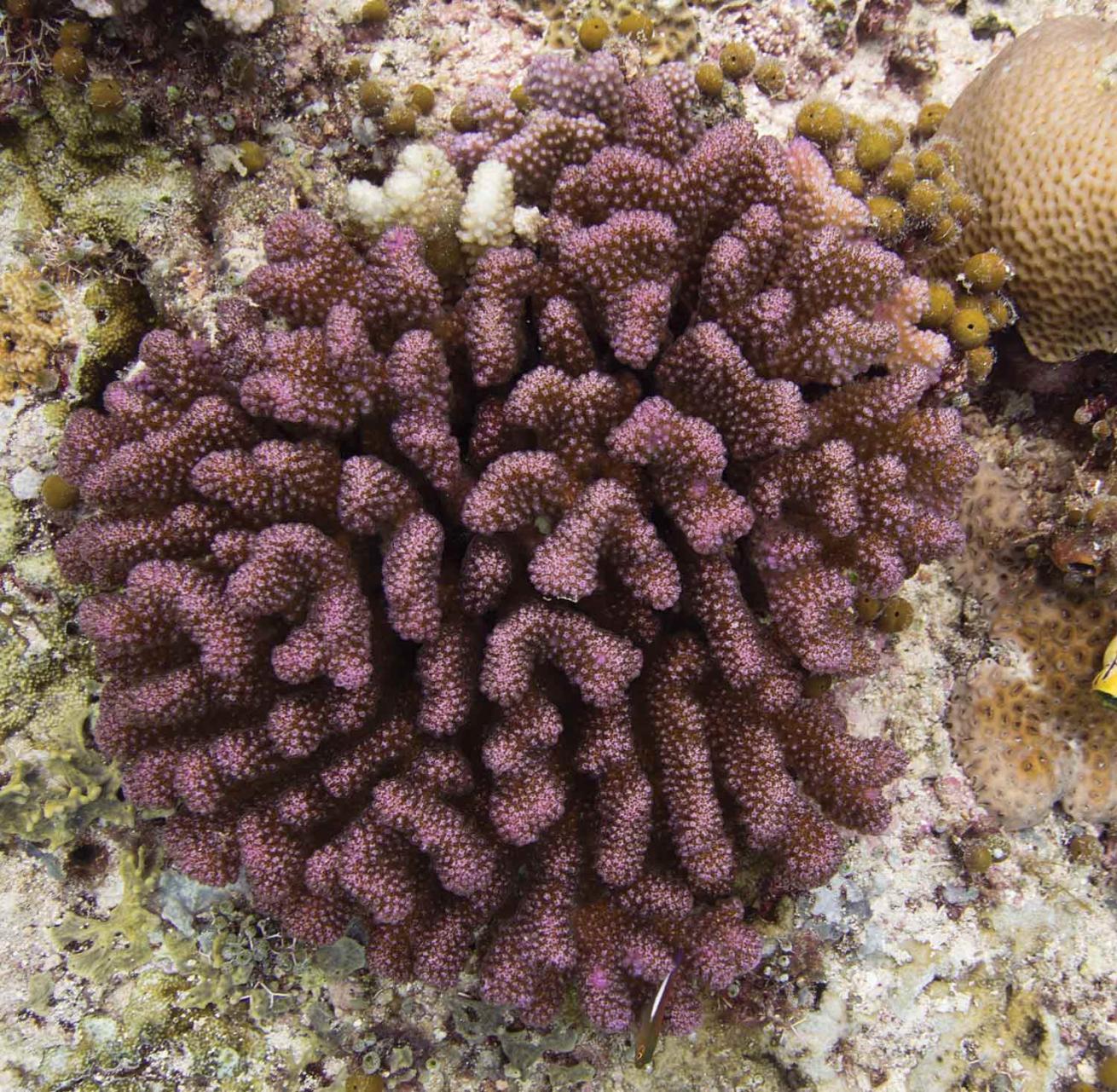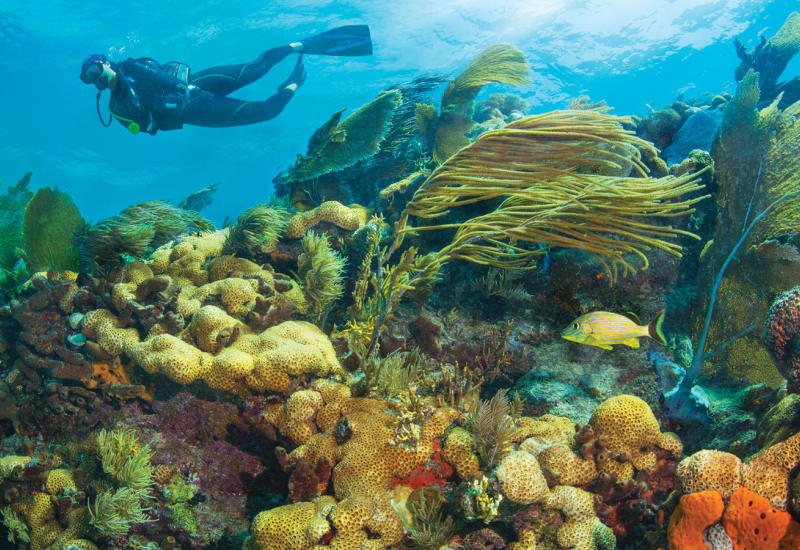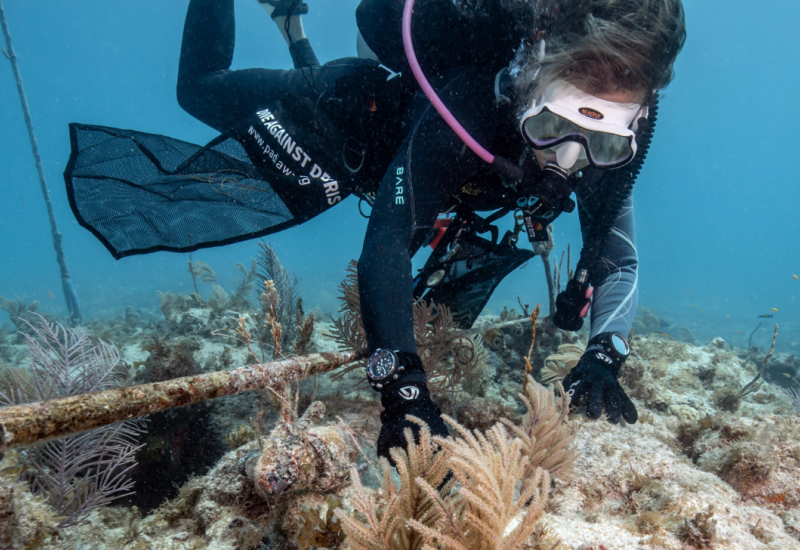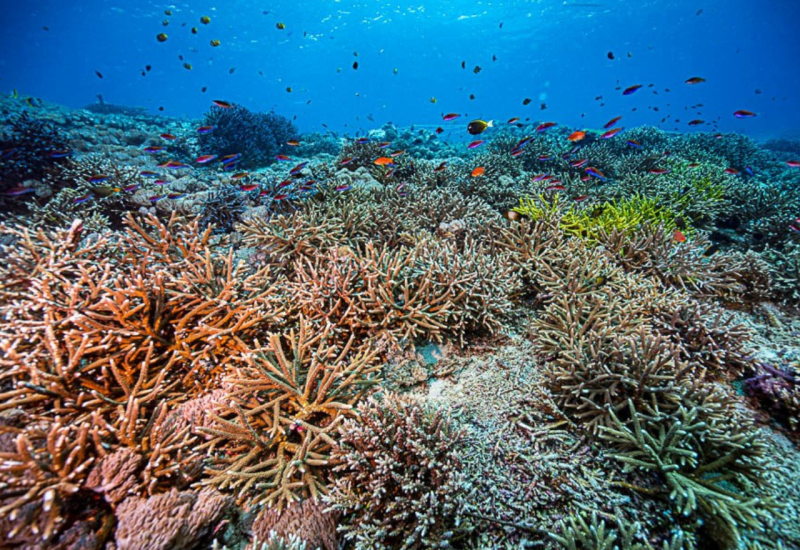How to Identify Pocillopora Corals

Nicole HelgasonCauliflower Coral
Pocillopora can be found all over the world. It is a hardy coral species with small bumpy corallites that cover the surface of small knobby branches. Most divers will recognize this coral by its bright-pink color, but Pocillopora that are purple, yellow or cream colored can also be found.
This coral can be influenced by the habitat in which it’s found. On reeftops, where you find lots of light and high current, the colonies are compact with short branches. As you dive deeper, the colonies are more spread out, and the branches become flatter so they can capture more light.
Meet Nicole Helgason: Coral Spotter
- Pocillopora can adapt to water with low salinity, fluctuations in pH, and coral bleaching events using a survival mechanism called polyp bailout. When this coral is stressed, individual surviving polyps can detach from the coral skeleton and drift farther down the reef to find conditions more suitable for survival. The polyps survive because they retain their zooxanthellae algae. If they find a new habitat, they can attach themselves to a hard substrate, start to grow a new skeleton, and form a new coral colony.
- Pocillopora verrucosa is one of the most common Pocillopora species and occurs in most shallow-water environments. The colonies don’t reach more than 24 inches across. The branches face upward, and the colonies are round, giving this genus the common name of cauliflower coral.










